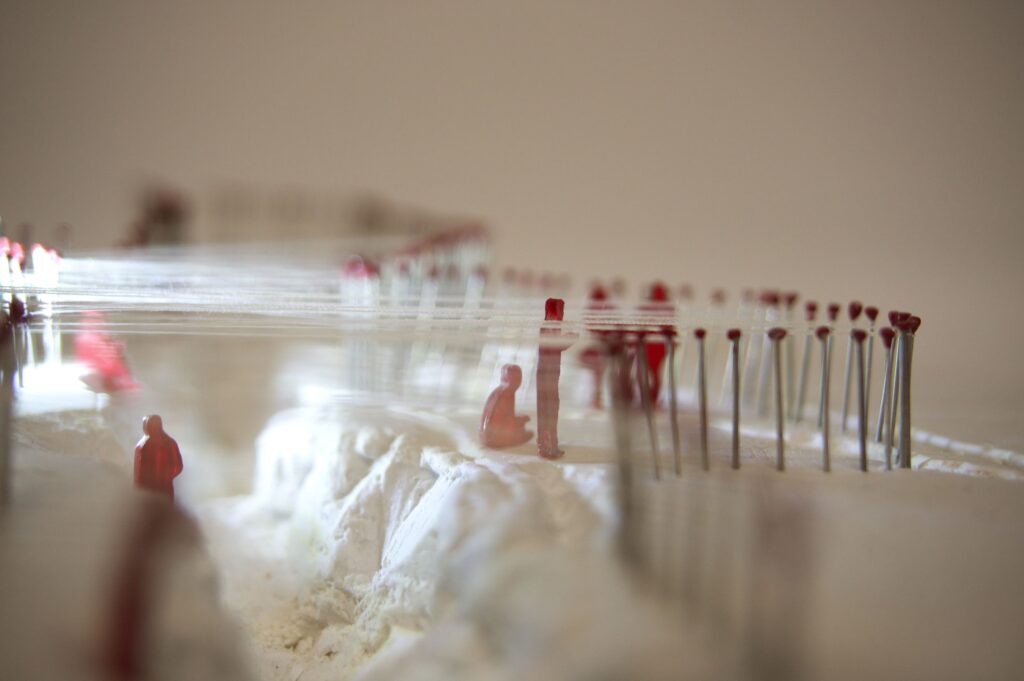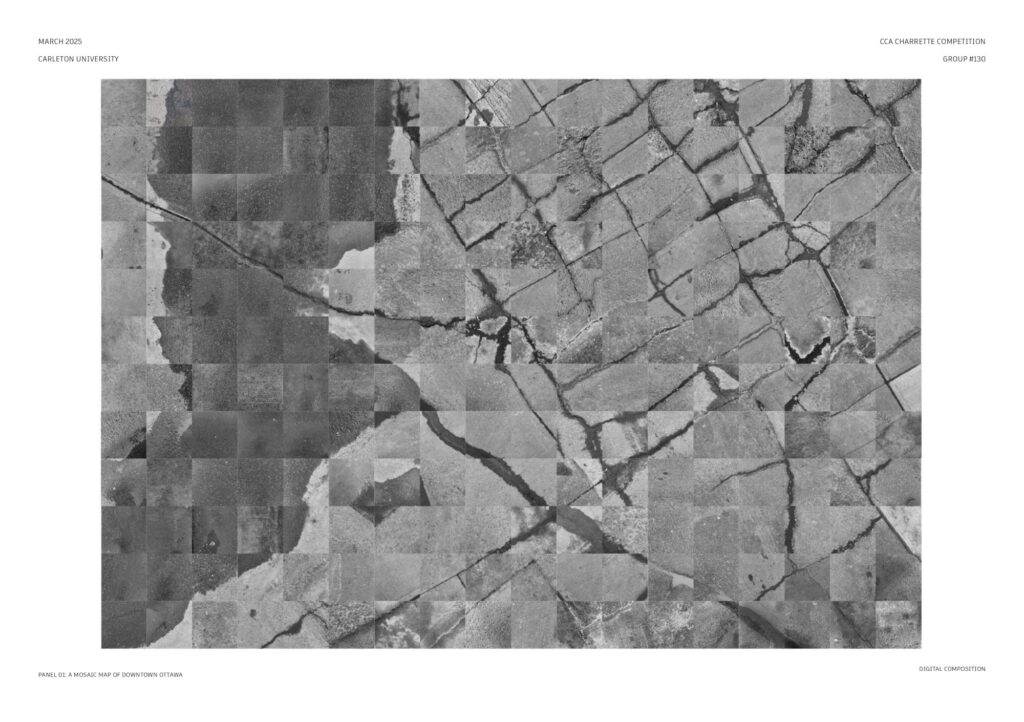Students win Special Mention in the 2025 Canadian Centre for Architecture Charrette
March 24, 2025






A team of second-year Carleton University architecture students has won a Special Mention in the 2025 Canadian Centre for Architecture (CCA) Interuniversity Charrette, an annual weekend competition that attracted 94 teams from 17 universities.

Undergraduate students Michael Conway, Jana Gineina, Myvel Ibrahim, Sarah King, and Marcus Yuen attended the awards ceremony in Montreal on March 20, where they received recognition for their project, A Fractured Cartography.
“We are grateful to have participated in such a dynamic competition, being challenged to explore pressing issues in a depth different from our architectural paths,” the team said.
“It was inspiring to see the work of so many talented young designers and to be surrounded by a passionate community of architects and mentors was an invaluable experience.”
See all the winners here.
This year’s edition, titled Cartography of the Invisible, was organized by the CCA in partnership with the Université du Québec à Montréal, the Université de Montréal, and McGill University, and challenged participants to uncover the hidden narratives within urban spaces through the lens of cartography and design.
In a time when social inequalities, homelessness, and the erasure of marginalized histories continue to shape cities, this year’s competition invited participants to make the unseen visible.
The Azrieli School of Architecture & Urbanism team created two panels focused on disparity in downtown Ottawa.
Panel 1: Fractured Cartography —presents a map of downtown Ottawa composed of 216 images of cracks found throughout the city’s core. Though fragmented, the map remains recognizable to those familiar with the capital, emphasizing key landmarks such as Parliament Hill and the ByWard Market. The stark contrast reveals the hidden cracks embedded within the urban landscape. Nowhere is this more apparent than in the divide between Wellington Street, home to Parliament and government institutions, and King Edward Avenue, where housing insecurity and social crises are most visible. This disparity serves as the focal point of the project.

Panel 2: Casting Fractures — translates these divisions into physical form through a plaster-cast sculpted model. A dramatic ravine is carved into the surface, exposing the growing divide within our communities. This fault line serves as a metaphor for the fragmentation of public infrastructure and the systems driving crises in addiction, mental health, and social care. Red is intentionally incorporated into the model to reflect the primary concerns of those in the ByWard Market. The colour symbolizes danger, violence, and aggression, representing the challenges faced in the area. At the same time, red conveys passion and warmth, suggesting the potential for renewal and societal healing through collective action.

The CCA Charrette was part of the second-year studio syllabus, with 63 students forming teams to participate. However, the instructors did not help with submissions and left the teams to their own devices.
“Ideas, models, representation, and more owe entirely to students’ acumen and cooperation,” says Associate Professor Inderbir Singh Riar, the studio coordinator.
“All students responded with aplomb and imagination,” he says. “The teaching team celebrates the many results that express often profound meditations on the city and embrace different means of drawing and model-making from plaster casts to rubber stamps.”
Participating teams had four days to develop a proposal in response to the theme, which was revealed on Mar. 13.
Initiated in 1995 by the CCA, the competition is open to students and recent graduates in architecture, landscape architecture, urbanism, environmental design, urban design, industrial design, and graphic design.
Members of the jury included architect, landscape architect and urban planner Peter Soland; curator and independent researcher Ji-Yoon Han; and Lola Sheppard, professor at the University of Waterloo School of Architecture and a founding partner of Lateral Office.
The jury evaluated 68 submitted proposals. A total of 94 teams consisting of 258 students from 17 universities across North America registered for this competition.
The winners receive a selection of CCA publications and Friends of the CCA memberships.